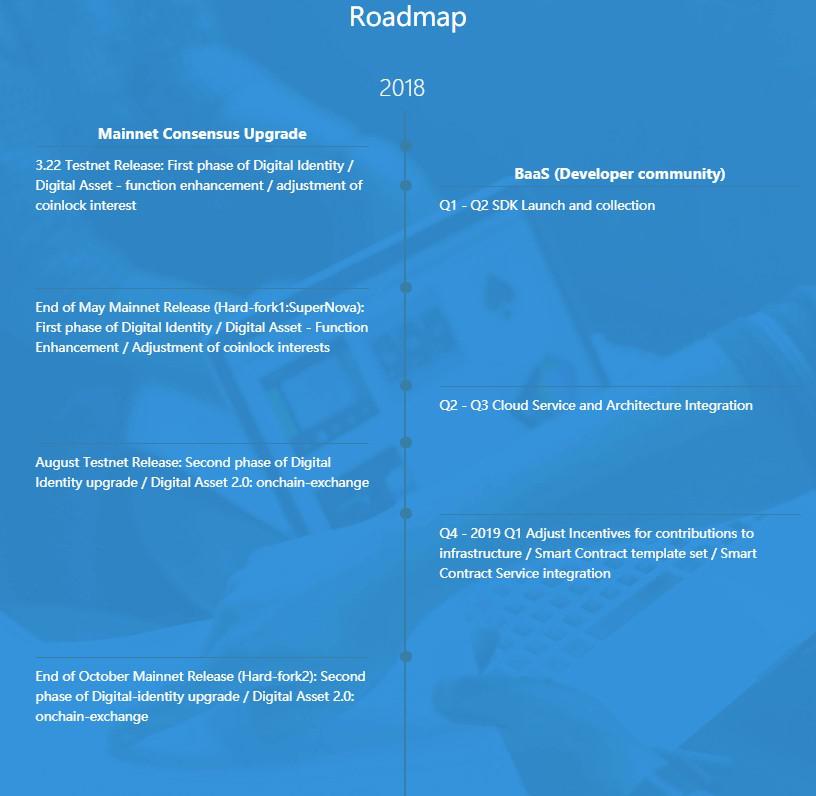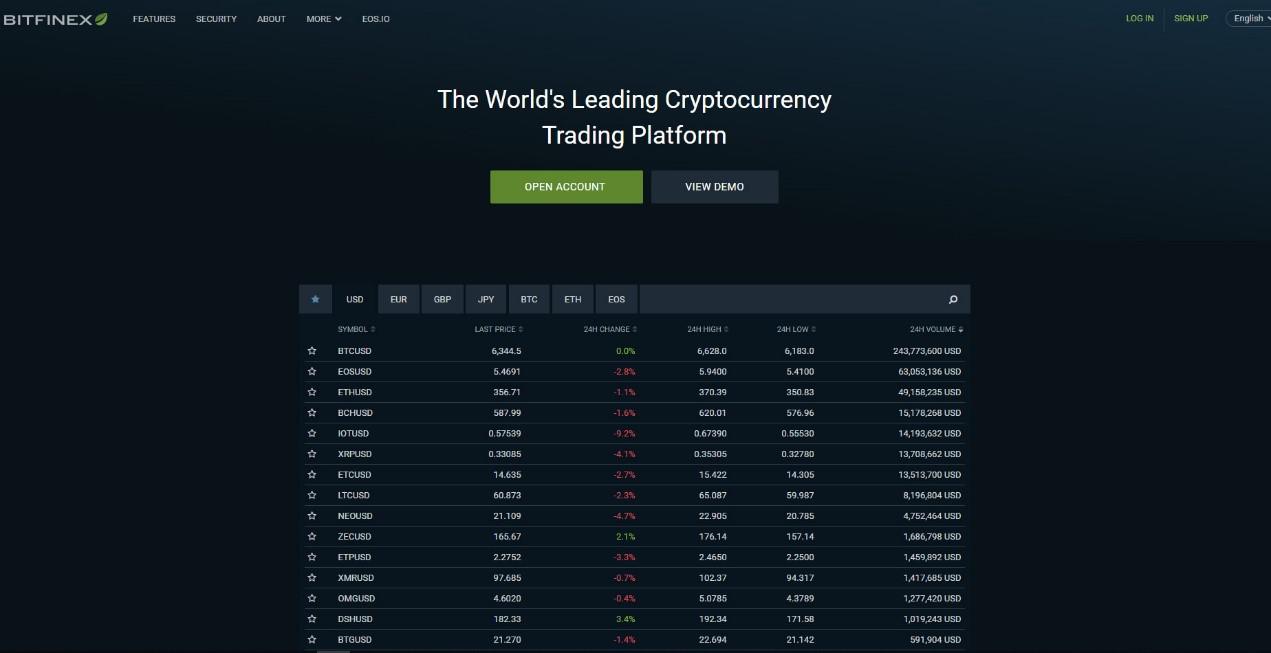Metaverse ETP Review – Keeping Your Digital Identity on the Blockchain
| Metaverse ETP Key Information | |
| Name | Metaverse ETP |
| Ticker | ETP |
| Total Supply | 100,000,000 |
| Category | Digital Identity |
| ICO Price | $0.30 |
| Website URL | Go to mvs.org |
| White Paper URL | Read the Metaverse ETP WhitePaper |
Metaverse ETP envisions a world where digital assets and digital identities are the foundation for asset transactions with the assistance of a value intermediary. This will usher in a new blockchain ecosystem that will completely change the way that financial services and transactions are processed.
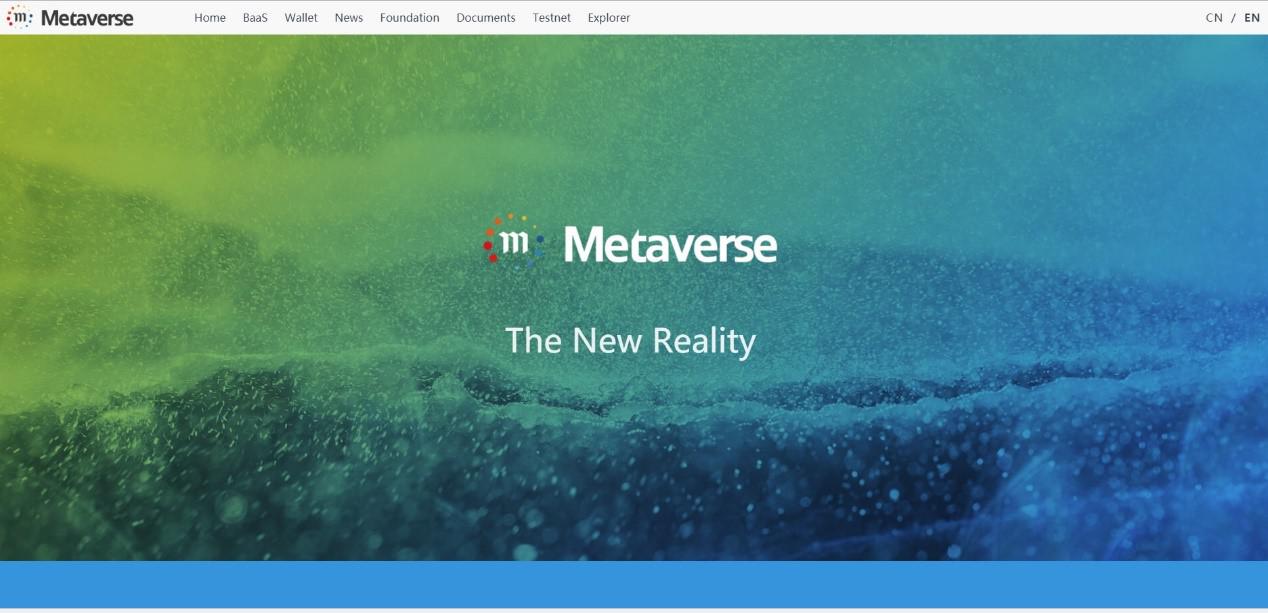
The Idea Behind Metaverse ETP
The name Metaverse was inspired by Neal Stephenson’s 1992 science fiction novel Snow Crash. In the novel, humans are in control of their own Avatars which communicate with one another and electronic agents in a virtual reality world. Metaverse feels the current reality is similar to that depicted in the novel, as people spend more time online than off, and communication has changed forever, taking place mostly via the internet. As more and more digital asset transfers in the future will take place on the blockchain through various digital identities and intermediaries, a new economic model will evolve, and the current internet of information will shift to an internet of value.
On a more practical level, the goal of Metaverse is to completely alter the way financial services and transactions are processed by improving identity verification services with a network of digital assets (MST), digital identities (Avatar) and value intermediaries (Oracles). This is the basis for Metaverse’s technology. Through these digital assets and the Metaverse Smart Token, users and startup founders can create and distribute their own cryptocurrencies.
The Metaverse team is located in Shangahi. The CEO, Eric Gu, has extensive experience as a programmer in both Canada and the US. He was one of the founders of NEO but left to build a better blockchain — Metaverse. Chen Hao, the CTO, was the recipient of an award at ArchSummit2017. He is often seen in international conferences explaining the concept of the internet of value and blockchain-as-a-service (BaaS).
As opposed to other BaaS solutions, Metaverse’s BaaS service focuses on public blockchain, allowing users and developers their own private key to access services from any point.

Metaverse ETP Partnerships
Recently, Metaverse announced a partnership with Lexit to work together to tokenize intellectual property (IP). Lexit is currently working on a searchable marketplace for entrepreneurs to buy and sell unused IP.
The company also partnered with Moscow-based crowdfunding blockchain project KICKICO as well as crypto investment bank CyberTrust, in an eye towards cornering the Chinese and Russian market.
In addition, it has a partnership with Draper Dragon, a venture company that aims to build stronger business relationships between China and the US in emerging technologies. They also have partnerships with Zengold, a digital gold asset project developed on the Metaverse blockchain
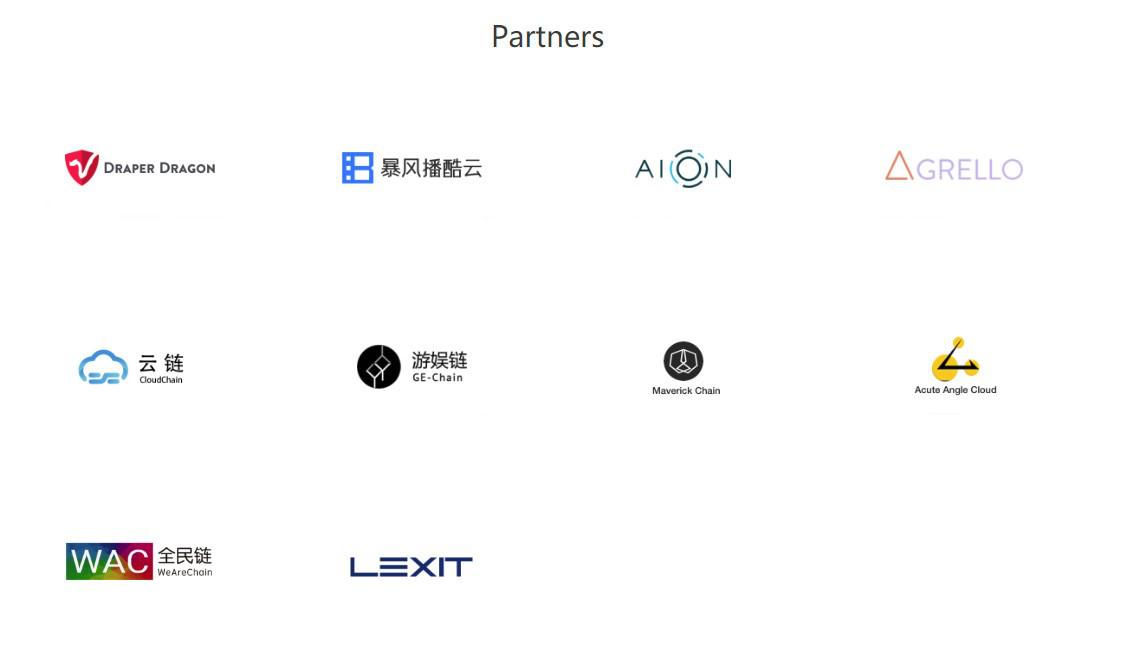
ETP Token Price History
The initial ICO price for ETP was around $0.30 when it launched on September 5th, 2016, raising a total of about $2 million. ETP rose to $5.00 at the beginning of January of this year, coinciding with its attendance of Money2020 and the release of its light wallet on Google Play, but fell to ICO-levels around March.
In July 2018 it rose again from $0.69 to over $2.00 after announcing the release of its mainnet upgrade, SuperNova, which allows users to create their own Digital Identities in addition to issuing their own Metaverse Smart Token (MST) and Metaverse Identifiable Token (MIT).
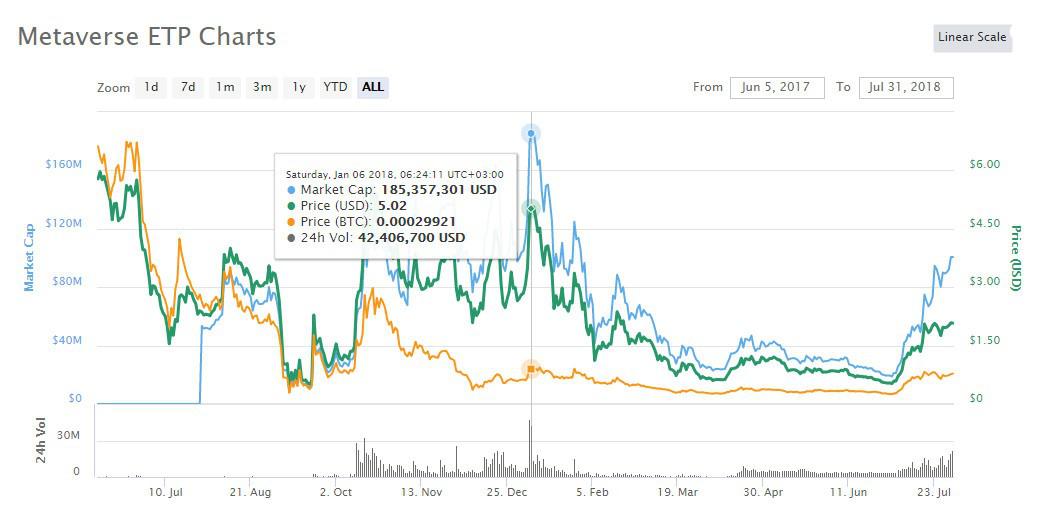
The Metaverse ETP Technology
The Metaverse ETP technology is aimed at becoming the Chinese substitute for Ethereum. The difference is that Metaverse focuses on smart assets rather than on smart contracts.
Metaverse’s technology has a number of components:
Consensus Mechanism
Metaverse’s consensus mechanism has two stages: the Proof of Work (PoW) stage and the HeartBeat Token-Height Delegated Proof-of-Stake (HBTH-DPoS) stage.
In the PoW stage, which will occur during the first few years of Metaverse’s operation, GPU mining will secure the system. The ETHASH algorithm will be the mining algorithm for Metaverse. Once they have developed a new consensus protocol, they will switch to it and the second stage will begin.
In the second stage, a Delegated Proof of Stake (DPoS) algorithm will be implemented, although it will have several flaws. First, attacks can occur by acquiring a large number of tokens in a short amount of tiem. Second, voters aren’t engaged once they have chosen a delegate.
In response to these flaws, Metaverse adds new concepts to the DPoS algorithm, Token-Height and HeartBeat. The HeartBeat concepts measures the recent activity of the user, while the Token-Heights measures the amount of time a user has held the ETP.
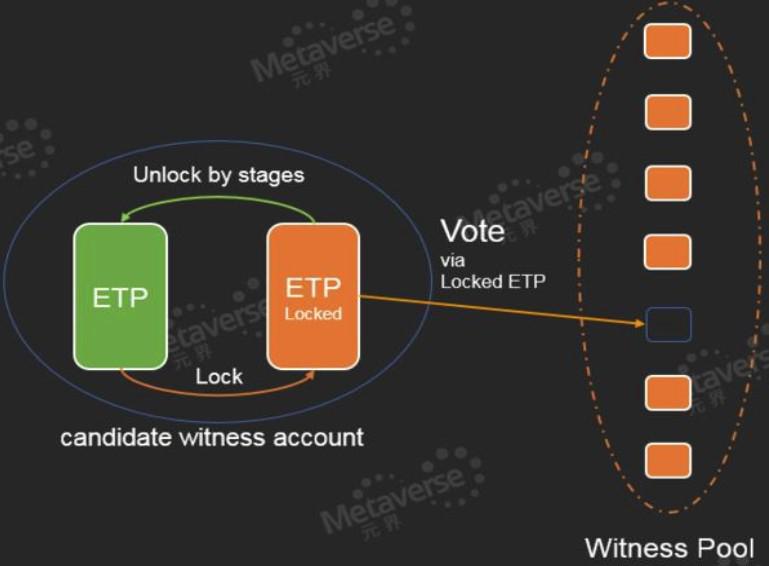
The Metaverse Smart Token (MST)
Since Metaverse is built on the concept of smart assets in order for smart contracts to work, there must first be digital assets. MST is designed once it is registered with a set of data that describes it as an asset (e.g. equity registration, game property registration, consumption points registration). The data description should be reusable and difficult to modify.

After assets are registered, others must recognize it to form its attributes, value and operational attributes. These attributes are displayed in trading and market price changes. To assist users to provide proof of assets, Metaverse will use intermediaries to use off-chain data feed to provide evidence of asset value. It will also provide credit scores available for digital identities.
The ETP Token
The ETP token is named after Entropy, the second law of thermodynamics which describes chaos in a system’s microscopic particles. As a utility token, it is valuable only within the Metaverse ecosystem for collateral or as fees paid to developers maintaining the blockchain as well as miners.
User fees and rewards
Fees will be charged for transactions such as: creating digital assets, registering a new avatar, becoming an intermediary, or having third-party institutions verify assets and identities in the Metaverse ecosystem.
Users can receive a reward of 3 ETP by mining a block on the Metaverse blockchain. For every 100,000 blocks mined, however, the reward amount decreases by 5%. Rewards are also given to depositors who decide to use the deposit lock function.
The reward interest rate increases in direct proportion to the number of blocks that are frozen as follows:

Micro-inflation protection
ETP is a token utility with no intrinsic value and should not suffer inflation. But since tokens are lost due to accidental loss, forgotten passwords, death and carelessness, the amount of ETP in circulation will steadily decrease. As a result, the ETP economic model takes micro-inflation into account when increasing the amount of ETP in circulation.
Token distribution
The ETP token distribution is as follows:
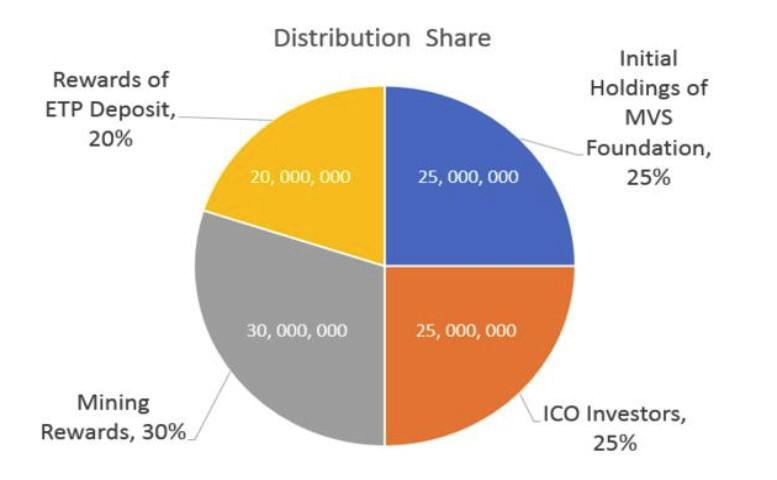
How to Purchase ETP
The main exchange for purchasing ETP is on Bitfinex, which currently has the largest exchange of the currency. ETP can be traded on Bitfinex for BTC, USD and ETH. At the moment the current daily volume of ETP traded on Bitfinex is over $2 million.
ETP is also available on the following exchanges:
- TOPBTC (Trade ETP with CNY on TOPBTC)
- Bit-Z (Trade ETP with BTC on Bit-Z)
- CoinBene (Trade ETP with BTC on CoinBene)
- QBTC (Trade ETP with CNY on QBTC)
- HitBTC (Trade ETP with BTC on HitBTC)
How to Mine and Store ETP
ETP can be mined using the Ethash mining algorithm. You will need to select a mining pool like http://etp.sandpool.org which has a low fee of 0.01% along with many features.
ETP can be stored in the Metaverse wallet available as a mobile (iOS and Android), desktop, and web version on their website.
Metaverse does not currently have hardwallet support.
Roadmap and Future Plans
Metaverse launched their mainnet in February of 2017.
On June 6th, the company announced a mainnet upgrade, its SuperNova full-node wallet release, which completed the first phase of their digital identity implementation.
It is planning to release the second phase of its digital identity implementation, an on-chain exchange, by the end of 2019.
